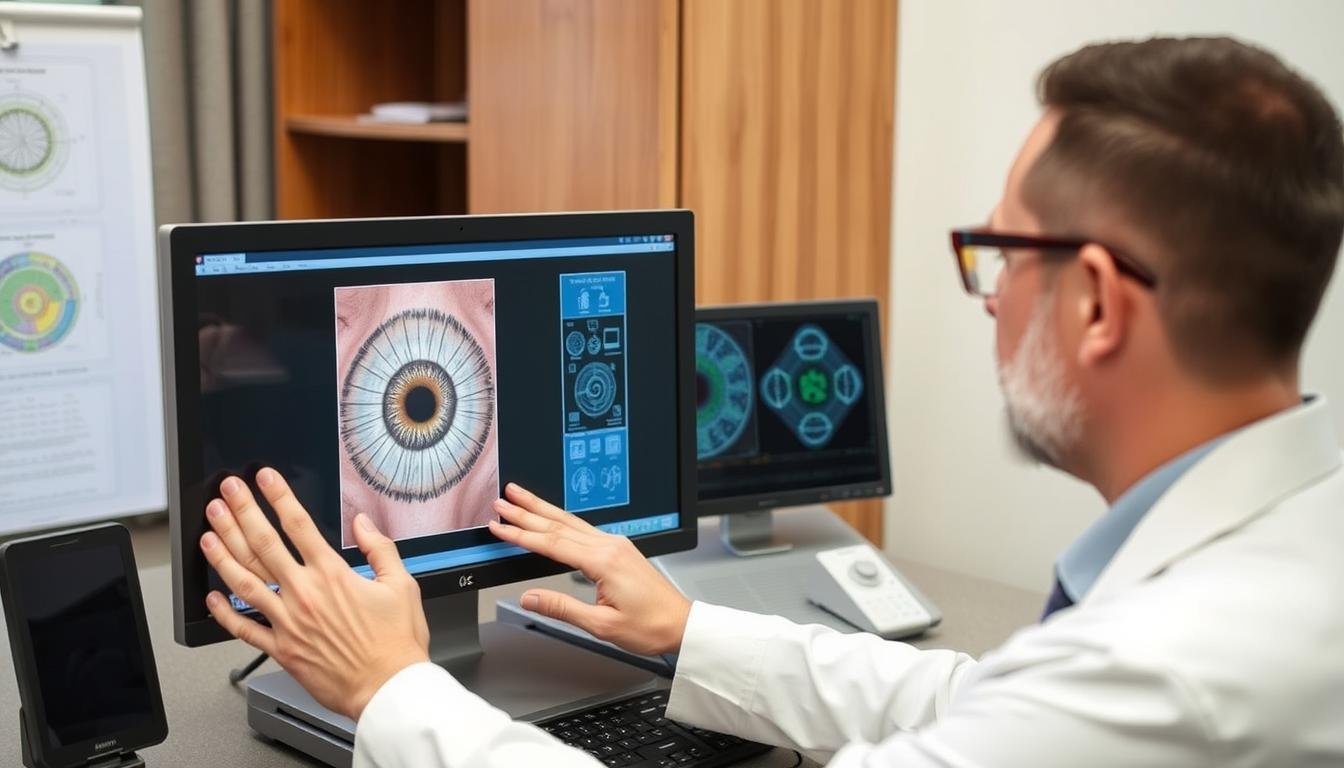Iridology Eye Chart Right Eye: The human iris contains remarkable patterns that many believe reflect our overall health status. Iridology—the study of the iris for health assessment—uses specialized charts to map connections between iris regions and body systems. The right eye, in particular, offers unique insights into the right side of your body and specific organ functions. This comprehensive guide explores how an iridology chart for the right eye works and what the various markings might reveal about your health.
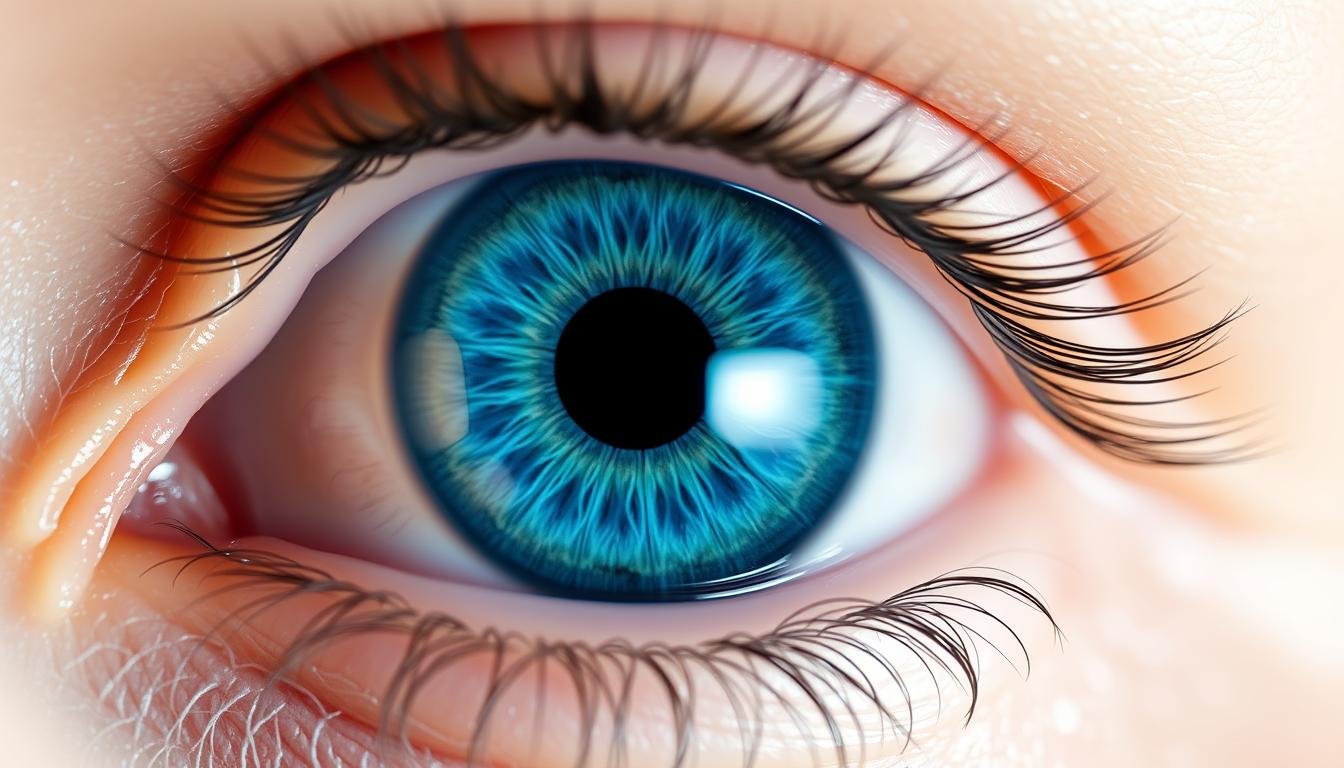
Right Eye Chart Overview: Mapping Your Body Through the Iris
Iridology Eye Chart Right Eye: An iridology chart for the right eye serves as a diagnostic map that divides the iris into zones, each corresponding to specific organs and systems primarily on the right side of the body. According to iridology theory, the right iris connects specifically to organs and systems on the right side of your body, with some crossover to central systems.
Think of the iris like a clock face map of your body. The chart typically divides the iris into 12 sections corresponding to clock positions, with each zone linked to specific organs and systems. This clock-position mapping system is widely recognized by practitioners worldwide for its intuitive approach to iris analysis.
The 5 Key Zones in the Right Eye Iridology Chart
- Digestive Zone (5-7 o’clock) – Corresponds to the liver, gallbladder, pancreas, and ascending colon
- Respiratory Zone (2-3 o’clock) – Represents the right lung, bronchi, and respiratory function
- Brain and Nervous System (11-1 o’clock) – Reflects the right brain hemisphere and associated nervous system
- Urinary System (7-8 o’clock) – Indicates the right kidney and adrenal gland
- Lymphatic and Immune System (3-5 o’clock) – Shows lymphatic drainage and immune response



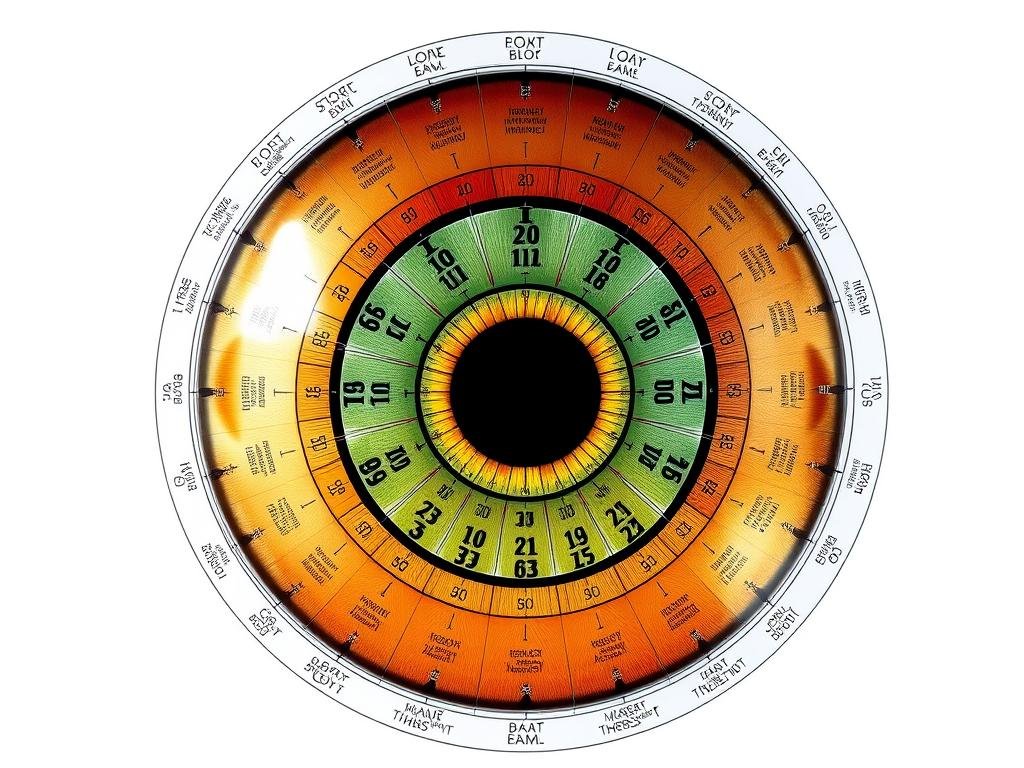
Iridology Eye Chart Right Eye: Die theoretische Grundlage der Iridologie des rechten Augen beruht auf den neurologischen Verbindungen zwischen der Iris und dem Zentralnervensystem. Die Iris enthält Tausende von Nervenenden und mikroskopischen Blutgefäßen, von denen Iridologen glauben, Veränderungen in den entsprechenden Körpergeweben durch die Wege des autonomen Nervensystems widerzuspiegeln.
Iridology Right Eye Diagramm (repräsentiert den rechten Seite)
| Ort zur Iridologie |
Körperbereich/Organ entspricht |
Wichtige Gesundheitsindikatoren |
Mögliche Probleme oder Ungleichgewichte |
| 12 Uhr |
Rechte Gehirnhälfte (psychologisch) |
Kognitive Gesundheit, geistige Klarheit |
Kognitiver Niedergang, geistige Müdigkeit, Stress |
| 1-2 Uhr |
Rechts Gesicht/Hals |
Hautgesundheit, Spannung im rechten Nacken |
Kieferschmerzen, Spannungskopfschmerzen, Sinusprobleme |
| 2-3 Uhr |
Rechte Hals |
Rechte Lungen-, Schilddrüsen- und Halsgesundheit |
Halsschmerzen, Husten, Heiserkeit, Schilddrüsenungleichgewicht |
| 3-4 Uhr |
Rechts oberer Rücken |
Obere Wirbelsäule, Schulter und Lungengesundheit |
Spannungen in Schultern, Atemproblemen, Schmerzen im oberen Rücken |
| 4-5 Uhr |
Richtiger Magen |
Verdauungsprobleme, Magensäureproduktion |
Sodbrennen, Magengeschwüre, Verdauungsstörungen |
| 5-6 Uhr |
Rechte Beckenregion |
Fortpflanzungsorgane, rechte Niere, Harnsystem |
Prostataprobleme, Menstruationsprobleme, Harnwegsinfektionen |
| 6-7 Uhr |
Richtiger unterer Rücken/Beine |
Kreislauf, muskuloskelettaler Gesundheit |
Ischias, Muskelkrämpfe, Beinzirkulationsprobleme |
| 7-8 Uhr |
Richtige Niere |
Nierenfunktion, Flüssigkeitsretention |
Nierenerkrankung, Harninfektionen, Dehydration |
| 8-9 Uhr |
Rechte Lungen |
Atemgesundheit, Lungenfunktion |
Bronchitis, Asthma, chronisch obstruktive Lungenerkrankung |
| 9-10 Uhr |
Recht Herz |
Herz -Kreislauf -Gesundheit, Herzfunktion |
Bluthochdruck, Herzerkrankungen, emotionaler Stress |
| 10-11 Uhr |
Rechte Verdauungsorgane |
Verdauung und Nährstoffabsorption |
Verstopfung, IBS, Leberprobleme, Verdauungsstörungen |
| 11-12 Uhr |
Rechte Bauchspeicheldrüse/Milz |
Immunsystem, Blutzuckerregulierung |
Diabetes, Schwäche des Immunsystems, Verdauungsstörungen |
Key Markings & Patterns in the Right Eye Iris
Iridologists examine the iris for specific markings, colors, and patterns that may indicate inflammation, toxin accumulation, or organ stress. Understanding these markings is essential for interpreting the iridology eye chart right eye analysis.
3 Signs Practitioners Look For in the Right Iris
- Lacunae – Darkened areas or “crypts” that may indicate inherent weaknesses or genetic predispositions
- Radiale Furchen – Lines extending from the pupil outward that might suggest stress or tension in specific systems
- Pigmentflecken – Colored deposits that could indicate toxin accumulation or inflammation
Gemeinsame Irismarkierungen und ihre Interpretationen
Color Variations
Iridology Eye Chart Right Eye: The base color of the iris provides foundational information. Blue or lighter irises show markings more clearly, while brown irises may require more careful examination. In the right eye, a yellowish tint near the liver zone (5 o’clock position) might suggest potential liver stress or gallbladder issues.
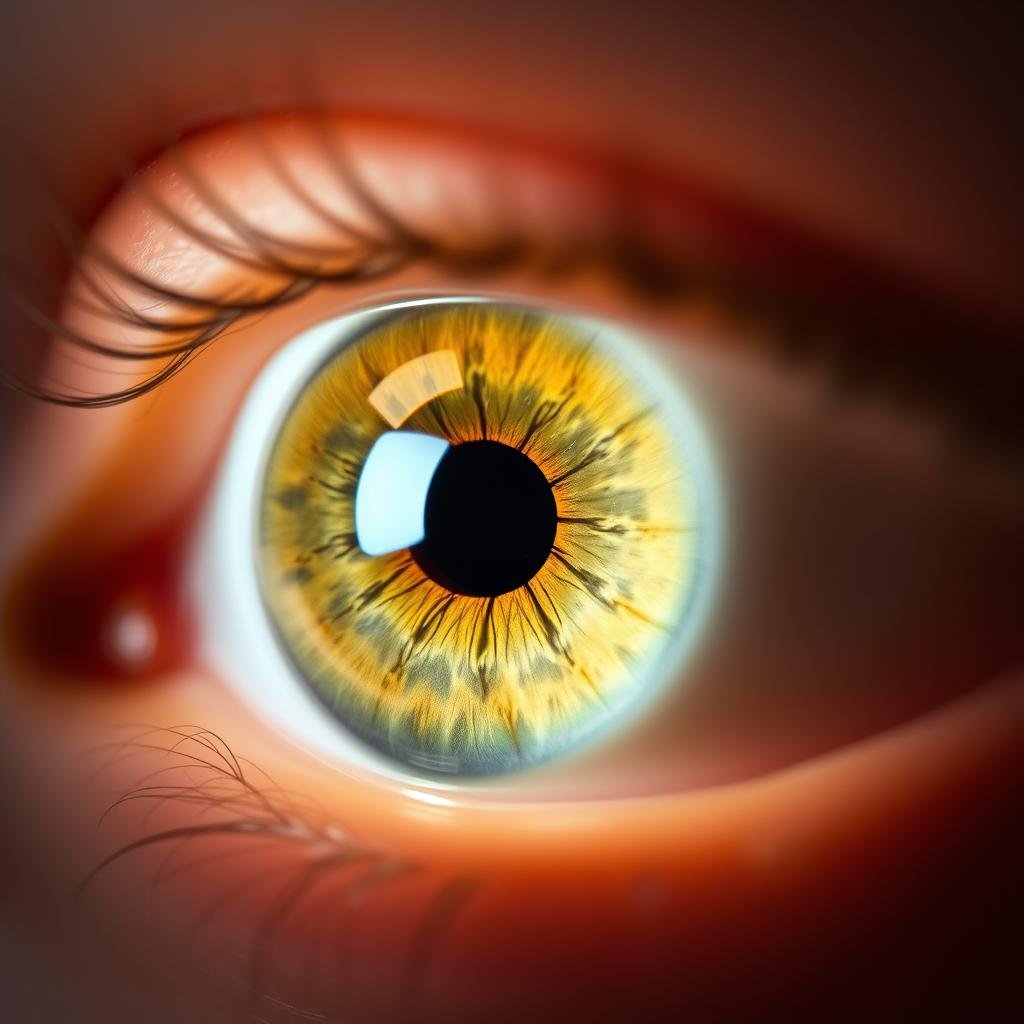
Strukturzeichen
Iridology Eye Chart Right Eye: The structure and integrity of iris fibers reveal information about tissue strength. Separated fibers might indicate potential weakness in the corresponding organ system. For example, loose fibers in the digestive zone of the right eye chart could suggest digestive system sensitivity.
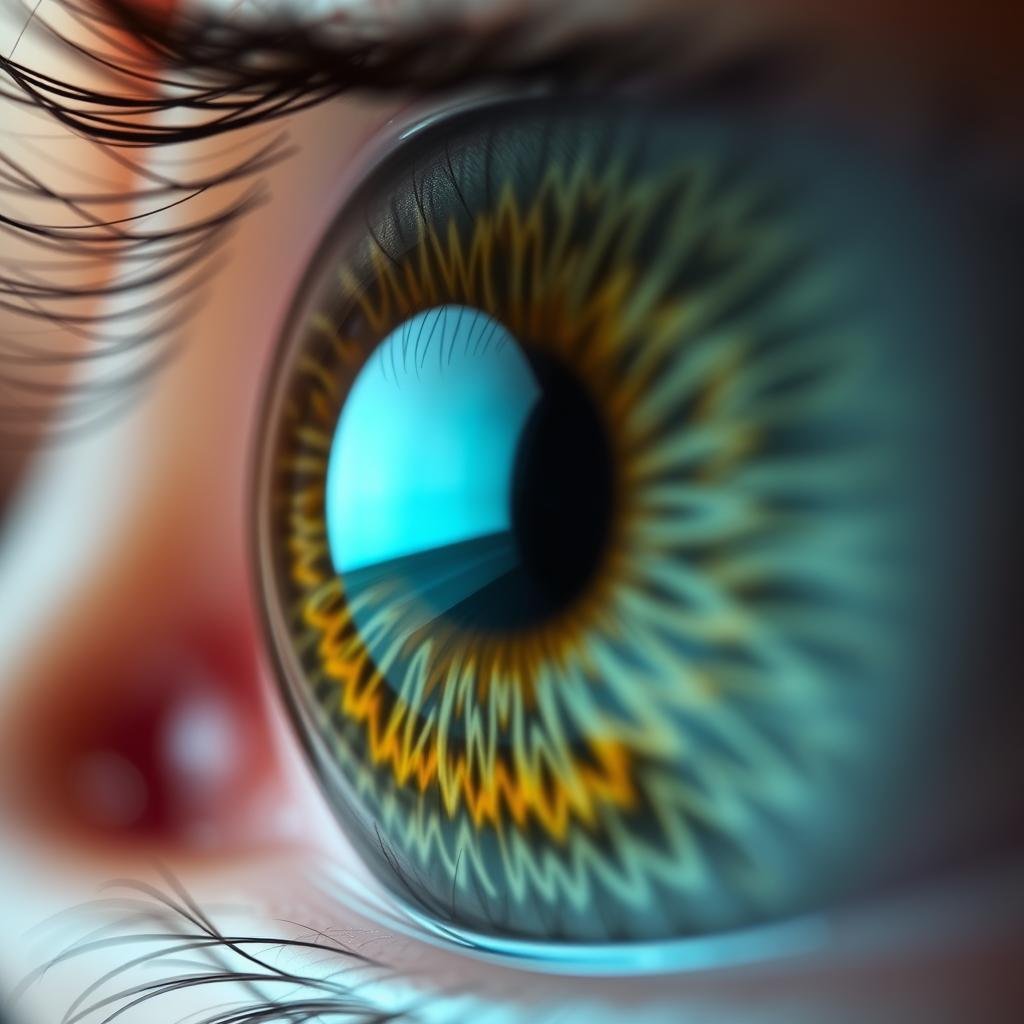
Rings and Circles
Iridology Eye Chart Right Eye: Concentric rings in the iris, known as “Stressringe” oder “nerve rings,” may indicate nervous system tension or stress responses. In the right eye, these rings are particularly significant when they appear in the brain and nervous system zones (11-1 o’clock positions), potentially indicating right-hemisphere stress patterns.
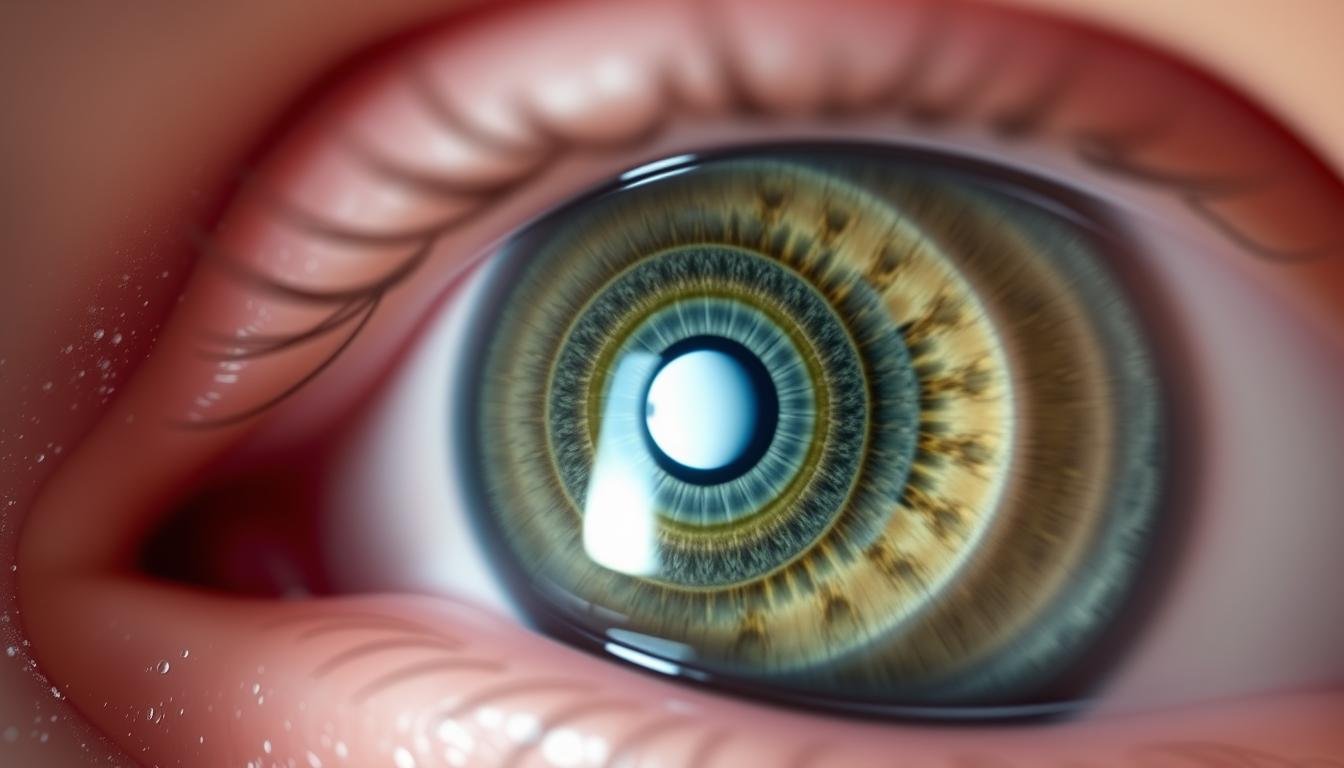
Interpreting the Right Eye Iridology Chart: A Step-by-Step Guide
Practitioners follow a systematic approach when analyzing the right eye iris using an iridology chart. Here’s how the process typically works:
- Examine the Overall Iris – First, observe the entire iris for its base color, overall structure, and any immediately noticeable markings.
- Identify the Zones – Using the clock-position system, locate the specific zones corresponding to different organs and systems.
- Analyze Specific Markings – Look for lacunae, pigment spots, radial furrows, and other markings within each zone.
- Correlate Markings with Health Conditions – Connect the observed markings to potential health implications based on their location, appearance, and intensity.
- Create a Comprehensive Assessment – Combine all observations into a holistic health assessment, noting areas that may require attention.

Iridology Eye Chart Right Eye: When interpreting markings, practitioners consider both acute and chronic indications. White or yellowish markings often suggest acute inflammation or irritation, while darker spots or lacunae might indicate chronic conditions or inherent weaknesses. The intensity and clarity of these markings provide additional information about the severity of potential health issues.
Entdecken Sie, was Ihre Iris über Ihre Gesundheit verrät
Our comprehensive iridology guide provides detailed charts and interpretation methods to help you understand what your eyes are saying about your health. Download our free guide to start your journey into iris analysis.
Download Free Iridology Guide
Case Study Examples: Right Eye Iris Analysis in Practice
To better understand how Iridologie-Diagramme are applied in practice, let’s examine some hypothetical case studies that demonstrate the correlation between iris markings and potential health conditions.
Fallstudie 1: Beurteilung des Verdauungssystems
Observation: A 42-year-old male’s right iris showed distinct dark markings in the 5-7 o’clock positions (hepatic and intestinal zones), with several small lacunae in the liver area.
Interpretation: These markings suggested potential liver congestion and intestinal inflammation according to the iridology eye chart right eye mapping. The practitioner noted that these patterns aligned with the client’s reported symptoms of occasional digestive discomfort and fatigue after meals.
Recommendation: Der Iridologe suggested dietary modifications focusing on liver-supportive foods and probiotics. After three months of implementing these changes, both the client’s symptoms and subsequent iris analysis showed improvement, with reduced darkness in the affected zones.

Fallstudie 2: Bewertung des Atemsystems
Observation: A 35-year-old female’s right iris analysis revealed distinct white markings and radial furrows at the 3 o’clock position (respiratory zone).
Interpretation: According to the iridology chart for the right eye, these markings suggested potential inflammation and stress in the respiratory system. The client confirmed a history of seasonal allergies and occasional breathing difficulties.
Recommendation: The practitioner recommended an anti-inflammatory protocol and environmental adjustments. Follow-up iris analysis showed reduced markings in this zone, correlating with improved respiratory function and fewer allergy symptoms.
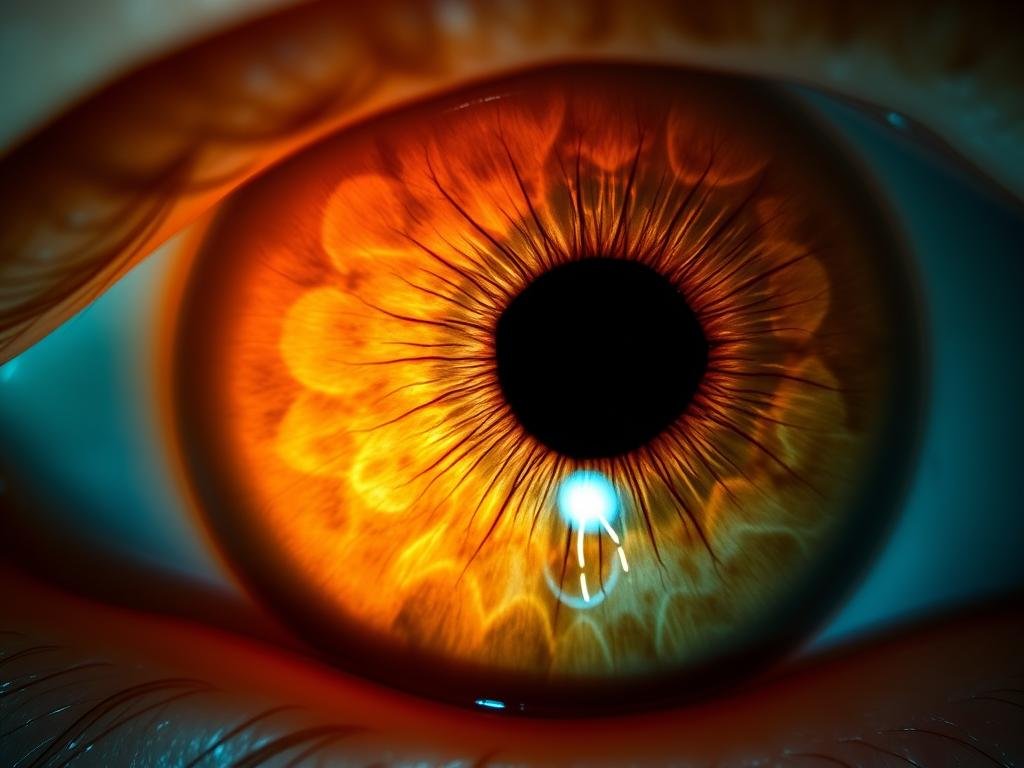
These case studies illustrate how practitioners use the iridology eye chart for the right eye to identify potential health patterns and develop targeted wellness recommendations. While individual results vary, many practitioners report correlations between iris markings and client health experiences.
Einschränkungen & Controversies: Understanding Iridology in Context
Iridology Eye Chart Right Eye: While Iridologie has passionate advocates, it’s important to understand the scientific community’s perspective and the limitations of this practice. Conventional medicine generally considers iridology an unproven diagnostic method, with limited peer-reviewed research supporting its efficacy.
Potenzielle Vorteile
- Nicht-invasive Bewertungsmethode
- Kann das vorbeugende Gesundheitsbewusstsein fördern
- Kann andere ganzheitliche Gesundheitansätze ergänzen
- Keine schädlichen Nebenwirkungen aus der Analyse selbst
- Kann subtile Ungleichgewichte erkennen, bevor klinische Symptome auftreten
Einschränkungen
- Begrenzte wissenschaftliche Validierung in kontrollierten Studien
- Potential für Fehldiagnose, wenn es als Einzeldiagnosewerkzeug verwendet wird
- Die Interpretation der Praktiker variiert erheblich
- Kann die konventionelle medizinische Behandlung für schwerwiegende Erkrankungen verzögern
- Irismuster sind weitgehend genetisch bestimmt und stabil
A 2018 study published in the Journal of Alternative and Complementary Medicine found correlations between certain iris markings and documented health conditions in 65% of cases examined. However, a systematic review in the European Journal of Integrative Medicine noted limitations in methodology across multiple studies, suggesting more rigorous research is needed.

A responsible approach is to view iridology as a complementary assessment tool rather than a replacement for conventional medical diagnosis. The right eye iridology chart can provide interesting insights, but should be considered alongside other health information and professional medical advice.
Praktische Leitlinien für die Verwendung iridologischer Diagramme
Wenn Sie sich für die Erforschung der Iridologie als komplementäres Instrument zur Bewertung des Gesundheitswesens interessieren, berücksichtigen Sie diese praktischen Richtlinien:
- Work with a qualified iridology practitioner with formal training and certification
- Use high-quality charts with accurate zone mapping for consistent analysis
- Betrachten Sie die Iridologie als einen Bestandteil einer umfassenden Gesundheitsbewertung
- Dokumentieren Sie Iris ändert sich im Laufe der Zeit mit konsistenter Fotografie
- Behalten Sie die regelmäßigen konventionellen medizinischen Untersuchungen neben Iridologie bei
- Erforschen Sie die spezifische Iridologie -Tradition, die Ihre Gesundheitsphilosophie anspricht
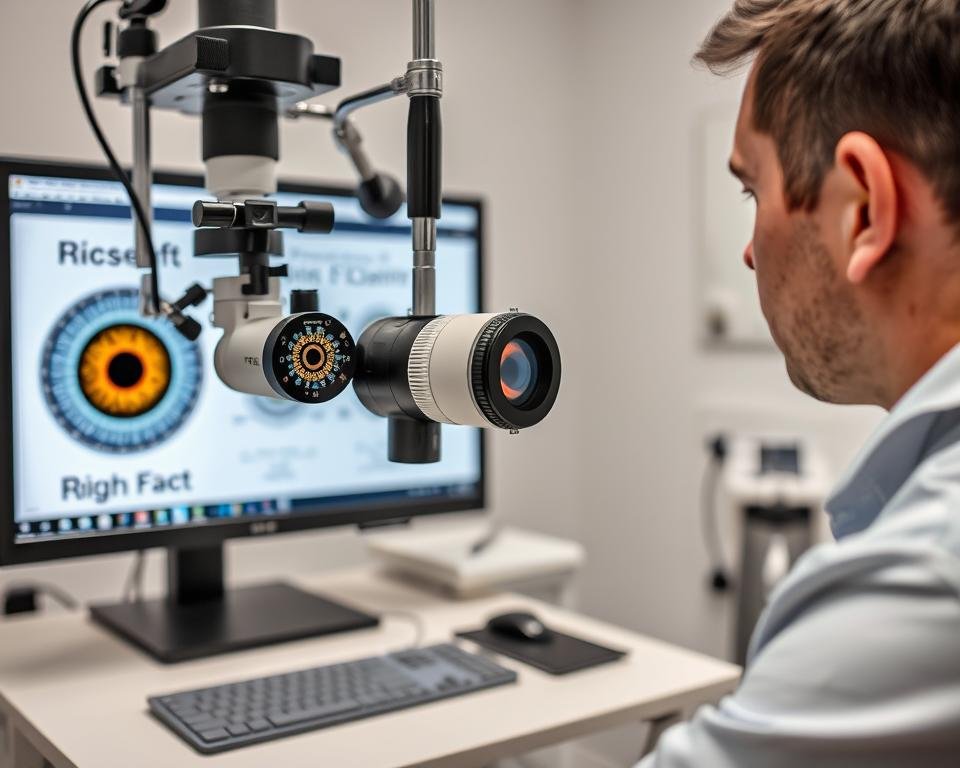
When seeking an iridology practitioner, look for someone with formal training, certification, and experience. A qualified practitioner will use proper equipment for iris examination, maintain professional standards, and work within the scope of their practice, referring to medical professionals when appropriate.
Schlussfolgerung: Der Wert der Iridologie des rechten Augen
Iridology Eye Chart Right Eye: Iridology charts for the right eye offer a fascinating window into potential health patterns, particularly for organs and systems on the right side of the body. While scientific validation remains limited, many practitioners and individuals find value in this non-invasive assessment approach as part of a holistic health perspective.
The clock-position system represents one of the most accessible and detailed mapping methods available today. Whether you’re a health professional exploring complementary assessment tools or an individual interested in holistic health approaches, understanding iridology chart systems provides another perspective on the body’s intricate connections.
Remember that iridology is best viewed as one component of a comprehensive health approach rather than a standalone diagnostic method. By combining traditional wisdom with modern understanding, tools like the right eye iridology chart can contribute to a more complete picture of health and wellness.
Explore Your Iris Health Patterns with a Professional Consultation
Curious about what your iris reveals about your health? Our certified iridologists provide comprehensive iris analysis using professional equipment and detailed right eye iridology charts. Schedule your consultation today.
Book Your Iridology Consultation
